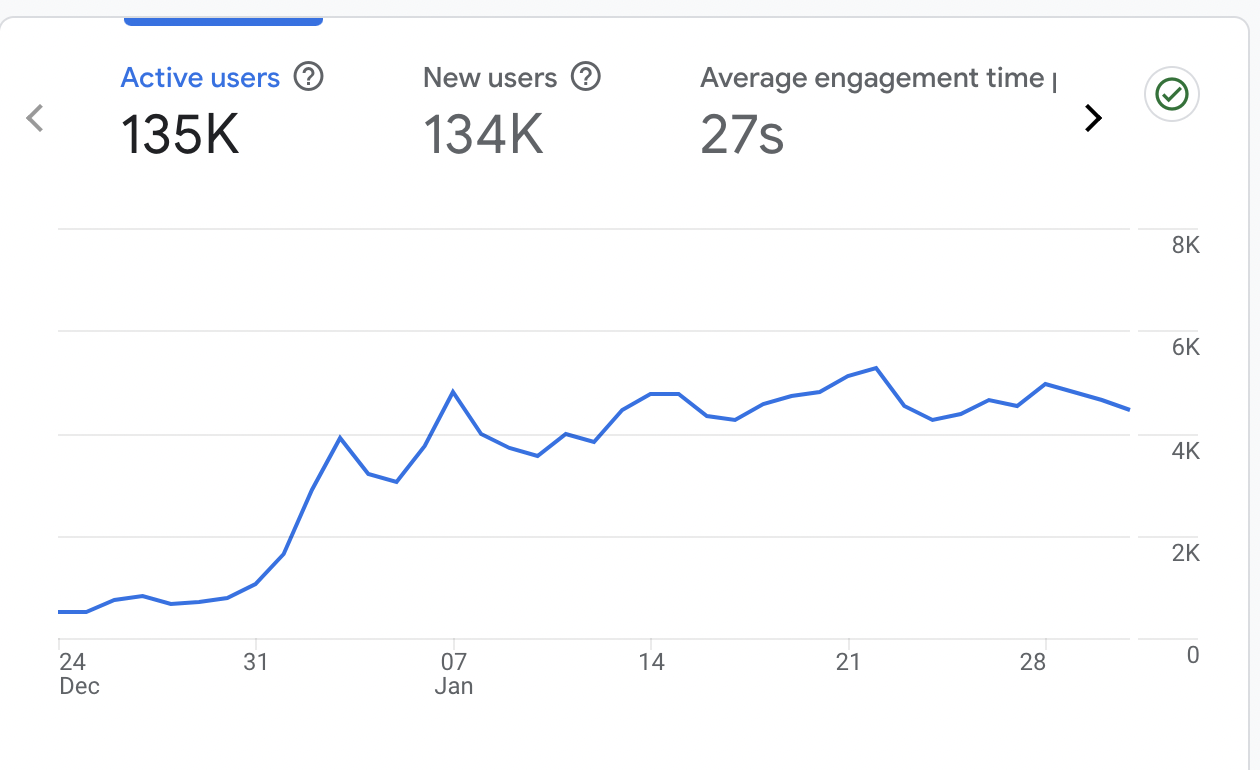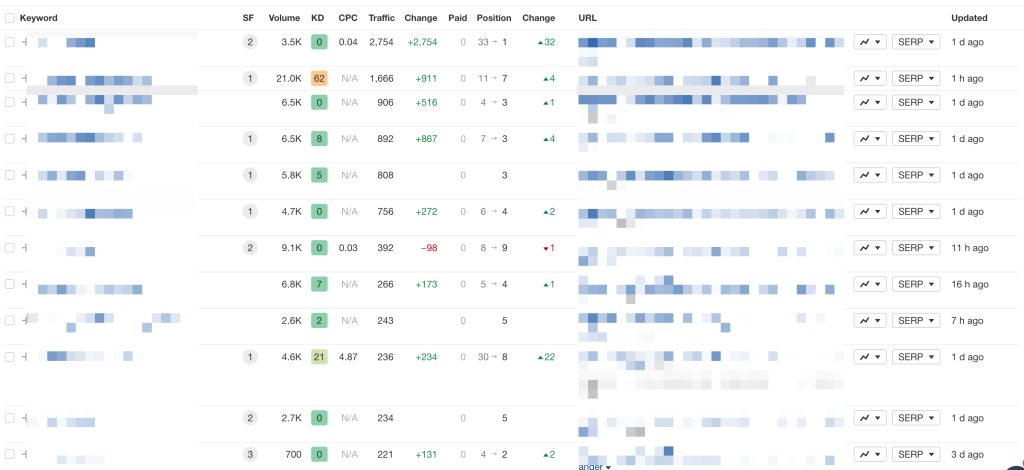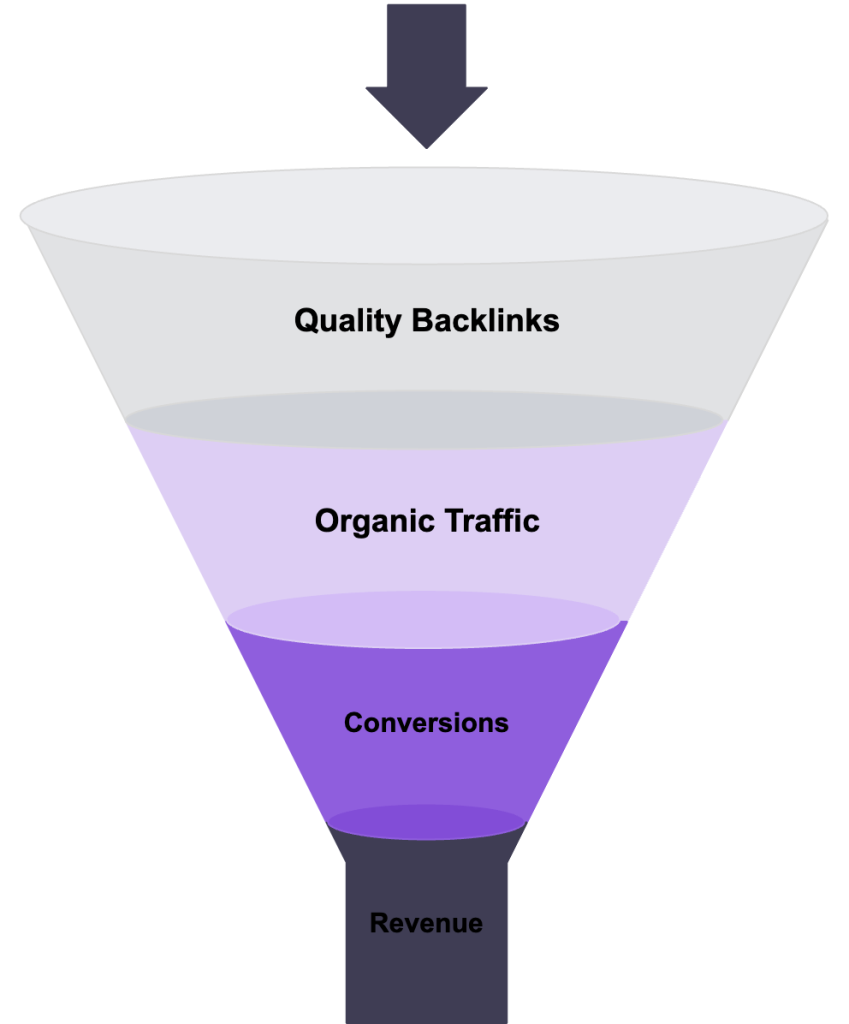
This guide will teach you how to gauge the success of your link building efforts by accurately measuring ROI. Explore the tools and techniques you need to optimize marketing campaigns and ultimately achieve your business goals.
Did you know that 61% of marketers say that improving SEO and growing their organic presence is the top inbound marketing priority for their business?
Yet strangely enough, so many businesses still really struggle to effectively measure the ROI of their link-building campaigns.
This is the world we currently live in.
In the context of link building, Return on Investment (ROI) refers to the value gained from your investment to acquire backlinks.
Measuring the ROI of your link building campaigns is crucial because it allows your business to understand whether your efforts are generating the desired outcomes.
This is why we’ve put together this guide to help you understand how to measure the ROI of your link building efforts.
Not only will you learn about the key metrics to track, the tools used to do so and the methods for calculating ROI, but also our top strategies to improve your results.
So whether you’re new to link building or an experienced professional just looking to refine your strategy, our guide is worth the read.
Let’s get into it.
Understanding ROI in the Context of Link Building
We’ll start by answering the three most common questions that you will no doubt have crossed your mind before discovering this guide.
What is ROI in Link Building?
As we briefly touched on above, ROI in link building measures the financial return on your investment to acquire backlinks.
Unlike more traditional marketing strategies where ROI may be immediate, link building often involves a longer timeline and multiple factors having an effect.
For this reason, it’s important you distinguish between both the quantity of links and the quality of those links.
Make sure you focus on how they contribute to your overall goals such as increasing traffic, higher Google rankings and ultimately higher conversions that lead to more revenue for your business.
How do you measure Link Building ROI?
Measuring link building ROI goes far beyond just counting the number of backlinks to your website.
It’s about understanding how these links drive value to your business.
For example, high-quality links from authoritative sites can lead to significant increases in organic traffic, better keyword rankings and more conversions.
But on the other hand, low-quality links will certainly not have the same impact.
Do More Links Always Equal a Higher ROI?
If only link building was this easy…
One of the most common misconceptions is that more links automatically equal a higher ROI.
But this is far from reality where link quality is the far more important metric.
Links from high-authority, subject relevant websites are far more valuable than large numbers of links from any old low-quality site.
This is why measuring the ROI of your link building campaigns helps you focus on the links that truly offer a benefit to your business.
Key Metrics to Track for Link Building ROI
We recommend focusing on five key metrics when it comes to tracking the ROI of your link building campaigns.
#1. An Increase in Your Traffic

Start by measuring any increase in organic traffic directly attributed to new backlinks.
Tools such as Google Analytics will help you track this by analyzing traffic sources and identifying which links are driving the most organic traffic.
Remember that referral traffic comes from users clicking on your backlinks from other websites.
Tracking this metric will help you understand the direct impact your link-building efforts are having on your website’s visibility.
#2. Higher Google Rankings

Backlinks can and will significantly impact your Google rankings.
Track how specific backlinks and their anchor text affects the rankings of your target keywords using tools such as Ahrefs or SEMrush.
Not to mention search engine result page (SERP) visibility is crucial.
Having a higher visibility often leads to more organic traffic and a better ROI of your link building campaigns.
Tracking changes in your website’s SERP rankings over time helps gauge the impact of your link-building efforts.
#3. More Conversions Leading to Higher Revenue

Measure how your link-building efforts translate into conversions.
This metric of tracking leads and ultimately sales, is essential for understanding the direct impact your backlinks are having on business outcomes.
Attribution models, such as UTM parameters, can also help you track which backlinks are driving revenue.
Understanding this will help calculate the financial return of your link-building campaigns.
#4. The Quality of Your Backlinks
The authority of the websites linking back to you will significantly impact your SEO. A general rule of thumb being that a higher DA and PA of linking sites will usually correlate with a better link building ROI on your end.
Furthermore, the relevance of the linking site to your industry or niche is critical. A backlink from a site in your own niche is more valuable than one from an unrelated site.
Yes, even if it has a high authority!
#5. Your Brand Visibility and Authority
Increased brand mentions as a result of link-building campaigns can enhance your brand’s authority via its online visibility.
Backlinks almost always lead to your content’s visibility increased across key social media platforms, resulting in more social shares.
Tracking these shares and where they’re coming from, will help you understand the broader impact that your link-building efforts are having.
Tools for Measuring Link Building ROI
There are a number of tools we recommend using to measure the ROI of your link building campaigns.
In this section let’s discuss each of the most important and what they’re specifically used for.
#1. Google Analytics
Google Analytics is used to monitor traffic and conversions.
Essential for tracking these rates from specific backlinks, use Google Analytics to monitor how your link-building efforts are driving traffic and converting visitors into customers.
#2. Google Search Console
Google Search Console helps you measure changes in search performance due to gaining or removing backlinks to your site.
It provides insights into which keywords are driving traffic and how your site’s visibility is evolving over time.
#3. Ahrefs/Moz/SEMrush
We’ve placed them together because it’s really up to you where you place your focus, but tools like Ahrefs, Moz and SEMrush are invaluable.
These tools are used for tracking new backlinks, analyzing your backlink profile and monitoring changes in domain authority and organic keywords.
Start by trialing them all and you’ll soon figure out which works best alongside you and your business.
#4. UTM Parameters
When it comes to tracking your campaigns, using UTM parameters is key.
UTM parameters allow you to track the performance of specific link-building campaigns in terms of traffic and conversions, allowing you to make effective comparisons.
By setting up UTM codes, you can see which links are driving the most value and contributing favorably to your link building ROI.
#5. Your CRM System
Whichever you use, having a CRM System is key for all aspects of revenue tracking surrounding your business.
By integrating link-building data with your chosen CRM system, you can track the impact on sales and customer acquisition and provide a clear picture of your ROI.
Calculating the ROI of Your Link Building Campaign
So just how do you calculate the ROI of your link building campaign?
All things being equal, you’re able to use this basic ROI formula:
ROI = ( (Revenue−Cost) / Cost )×100.
When calculating your revenue generated, consider direct revenue such as direct sales or leads attributed to traffic from specific backlinks.
For your costs, we’re not only talking direct costs of your link-building activities, including tools, content creation and outreach, but also all of the indirect costs.
Costs such as time spent by staff and potential opportunity costs all need to be included for best results.
Just keep in mind that in order to calculate the most nuanced link building ROI, you’re going to have to factor in long-term SEO gains, brand authority and any other indirect benefits gained by your website.
Benchmarking the ROI of Your Link Building Campaigns
To effectively improve the ROI of your link-building campaigns, it’s essential that you benchmark your performance against industry standards.
Every industry is different, but this comparison provides valuable insights that help you set realistic expectations and goals for your campaign.
By comparing your ROI to your specific industry benchmark, you can gauge where your efforts stand relative to your peers and where you need to improve.
Setting achievable goals for your business is crucial for the perceived success of any link building campaign you choose to run.
Realistic expectations help in aligning your link-building efforts with your overall business objectives and make sure you’re always moving forward.
Finally, continuous monitoring of your strategy and campaign is going to be vital to its overall success.
Don’t be afraid to get your hands dirty.
Regularly reviewing and adjusting your link-building strategy on hard data, ensures that it will continue to deliver value for your business going forward.
Challenges You’ll Face Measuring the ROI of Your Link Building Campaigns
You’re going to face a number of challenges when it comes to measuring the ROI of your link building campaigns and you need to be ready.
Here is a list of some of the the most common attribution and data accuracy challenges that you must face head on:
- Multi-Touch Attribution: Learn how to attribute ROI across multiple touchpoints in your customer’s journey to help accurately measure the impact of your link-building efforts.
- Delayed Impact: Link building often has a delayed impact, meaning you must account for the time lag between link acquisition and visible ROI to avoid underestimating your efforts.
- Tracking Issues: Common issues with tracking data accurately can skew your ROI measurements, so ensure your tracking is set up correctly to mitigate any surrounding challenges.
- Influence of External Factors: Stay informed about external factors, such as Google algorithm updates, so they don’t inversely affect your ROI calculations.
Final Thoughts on Measuring the ROI of Your Link Building Campaigns
As this guide has helped shed light on, measuring the ROI of your link-building campaigns is an essential part of understanding the value of your efforts.
By tracking the right metrics and using the appropriate tools we’ve discussed, you will gain insights into how your backlinks are impacting your business goals.
So if you haven’t started, there’s no better time than now to begin to optimize your link-building campaigns by tracking your ROI.
Remember, if you need expert help, we’re always here to help.
Reach out to us using the form below and let’s discuss tailored strategies to maximize your link building ROI.